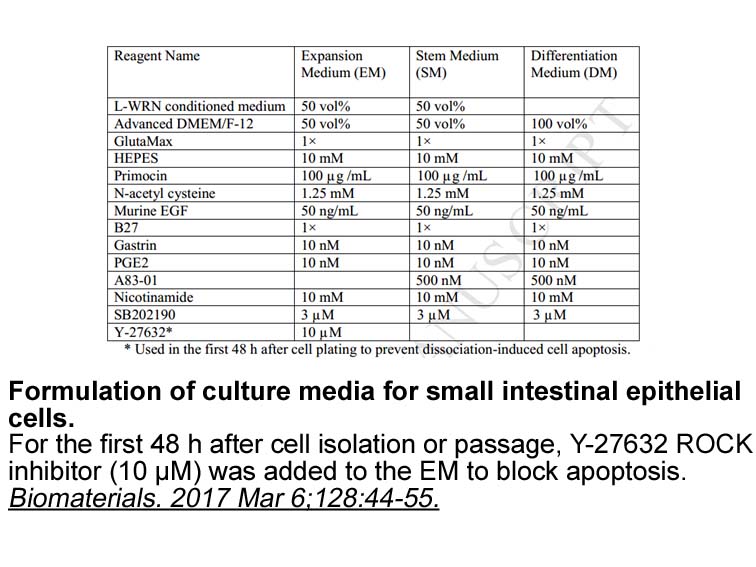Archives
Notably AR and AR signaling can also occur
Notably, β2AR and β3AR signaling can also occur via mechanisms independent from G protein [13]. Additionally, the response to GPCR stimulus can be modified by various parameters, including chronic stimulation, cell hypoxia, acidosis, and aging [14], [15], [16].
GRKs have a significant role in the regulation of adrenergic responses. Generally, GRK2 is considered the most important isoform of the 7 mammalian GRKs. Indeed mice with homozygous deletion of GRK2 exhibit embryonic lethality whereas gene ablation for the other GRKs resulted in relatively mild phenotypes [17], [18], [19]. GRK-mediated desensitization does not rely only on its catalytic activity but also on protein-protein interactions occurring in different cellular compartments [20]. Both up-regulated and reduced levels of GRK2 may affect cellular functioning. Alterations in GRK2 activity and expression have been described in numerous diseases, including myocardial infarction [21], Alzheimer’s disease [22], rheumatoid arthritis [23], multiple sclerosis [24], inflammatory pain [25], [26], opioid addiction [26], thyroid gland disorders [27], pituitary adenomas [28], ovarian cancer [29], and AZ191 [30].
GRK2 levels in peripheral blood lymphocytes have been reported to mirror changes in kinase expression in other organs under several pathophysiological settings [21]. In particular, GRK2 levels and activity are increased in lymphocytes from hypertensive patients. Impairment of β-adrenergic mediated vasodilation has been reported in both human hypertensive subjects and animal models of hypertension, and such an alteration has been related to the increased GRK2 abundance and activity [31]. Decreased β-adrenergic signaling due to increased GRK2 activity would reduce the vasodilatative response, leading to high blood pressure. This view is supported by the inverse correlation of GRK2 expression with blood pressure. Additionally, data from spontaneously hypertensive rats and Dahl salt-sensitive rats confirm increased levels of GRK2 in vascular smooth muscle cells, consistent with the observations in peripheral lymphocytes [32].
As discussed below in the section dedicated to adrenergic signaling and metabolism, elevated GRK2 levels could imply metabolic alterations and lead to insulin-resistance [13], [33], [34].
Adrenergic receptors and cardiovascular aging
The age-associated decrease in catecholamine-responsiveness in the elderly is well established. In particular, an age-related reduction in βAR sensitivity and density has been shown in the myocardium and has been attributed to down-regulation and impaired coupling of βARs to adenylyl-cyclase Xiao, 1998 #1544 . The age-linked decline in cardiac βAR response appears to be due to a down-regulation of β1ARs, as reported in experiments in aged explanted human hearts [35]. Additionally, a decreased sensitivity of βARs, measured by isoproterenol-induced changes in the catecholamine-stimulated adenylyl-cyclase activity has been shown in the cardiovascular system [10]. βARs compartmentalization may also participate in the age-associated decreased βAR responsiveness [36]. Indeed, whereas β1ARs are widely distributed on the plasma membrane, β2ARs are usually located in the transverse tubules, containing specialized proteins that couple membrane depolarization (excitation) to calcium-mediated myofilament shortening (contraction) [10], [37], [38], [39]. Henceforward, the localization of β2AR in cardiac cells leads to the generation of spatially restricted cAMP production, affecting calcium-dependent proteins that control the contraction  of myofilaments [40], [41]. Several conditions presenting a decreased myocardial function can elicit activity from the sympathetic nervous system (SNS) that eventually diverts blood flow to critical organs and increases cardiac output. The main players involved in such system are catecholamines, whose release is strictly orchestrated by the GPCR system, relating the adrenal gland and the heart [42].
of myofilaments [40], [41]. Several conditions presenting a decreased myocardial function can elicit activity from the sympathetic nervous system (SNS) that eventually diverts blood flow to critical organs and increases cardiac output. The main players involved in such system are catecholamines, whose release is strictly orchestrated by the GPCR system, relating the adrenal gland and the heart [42].